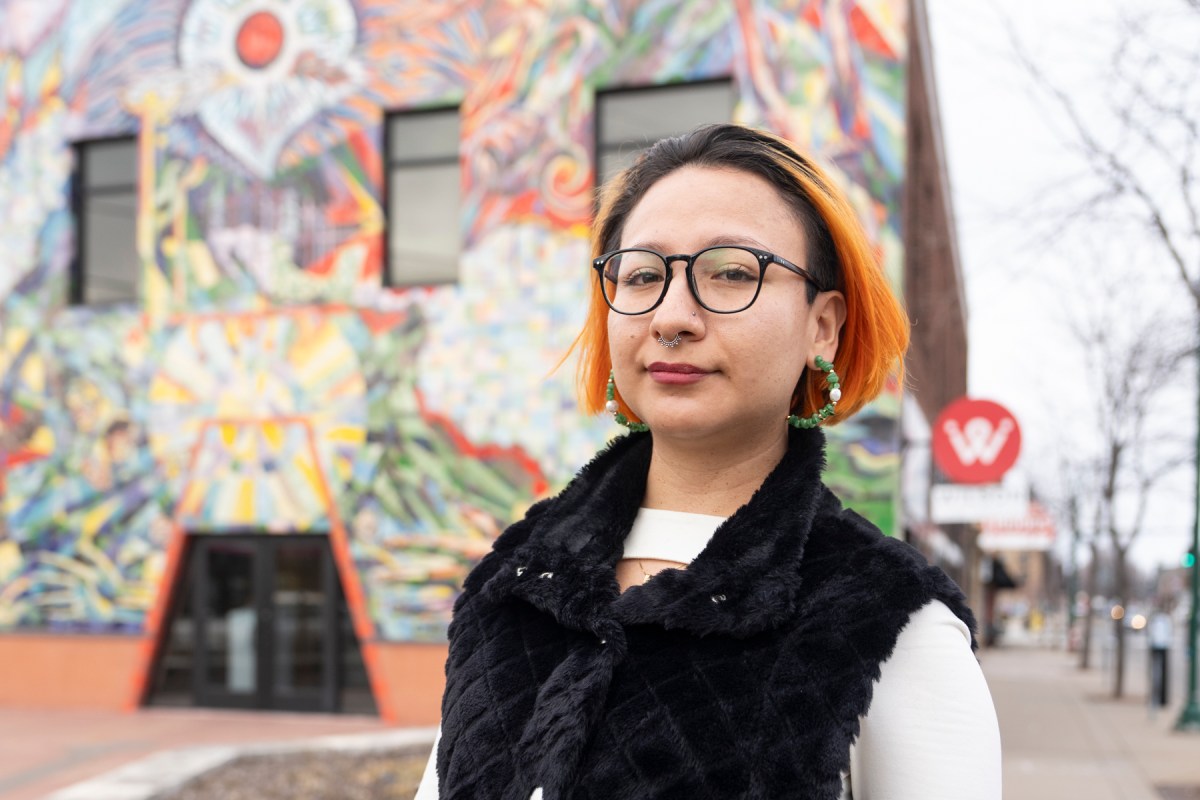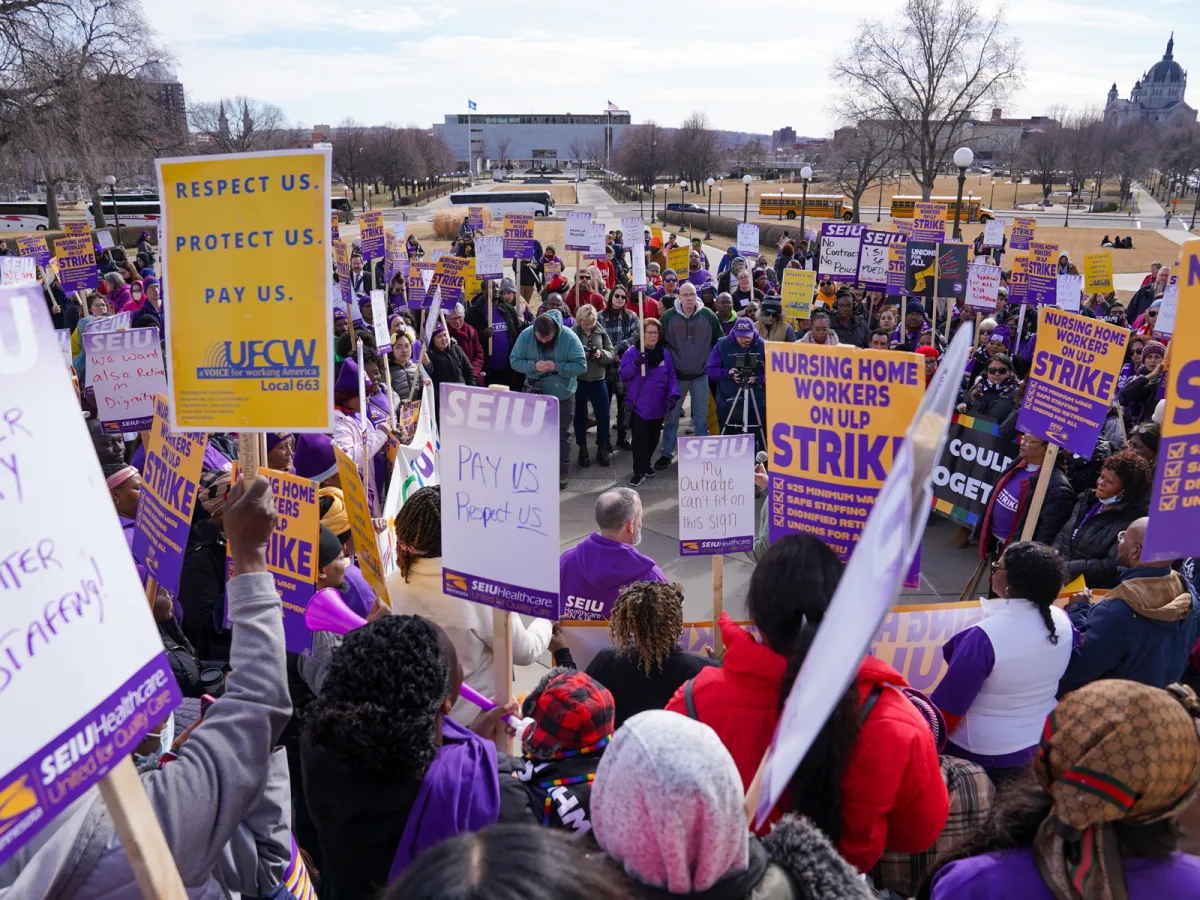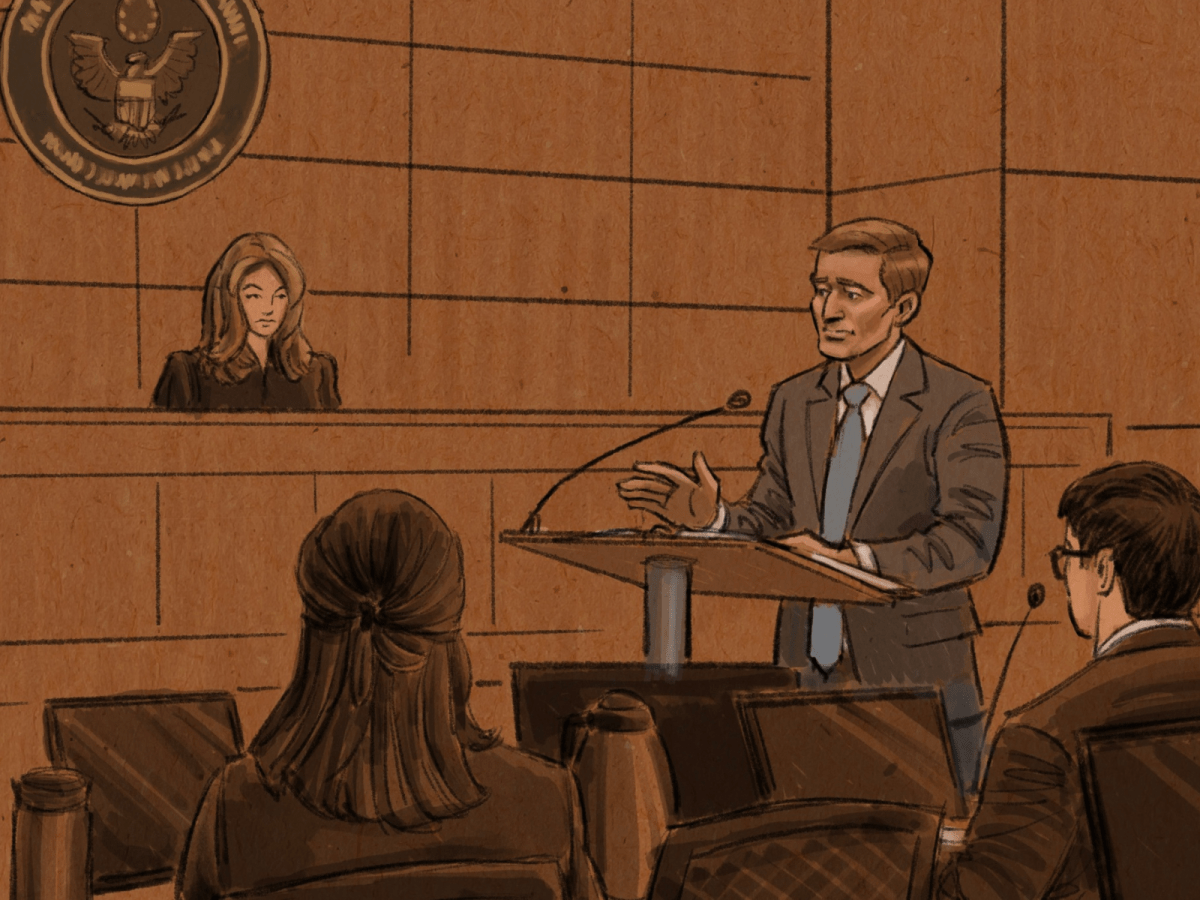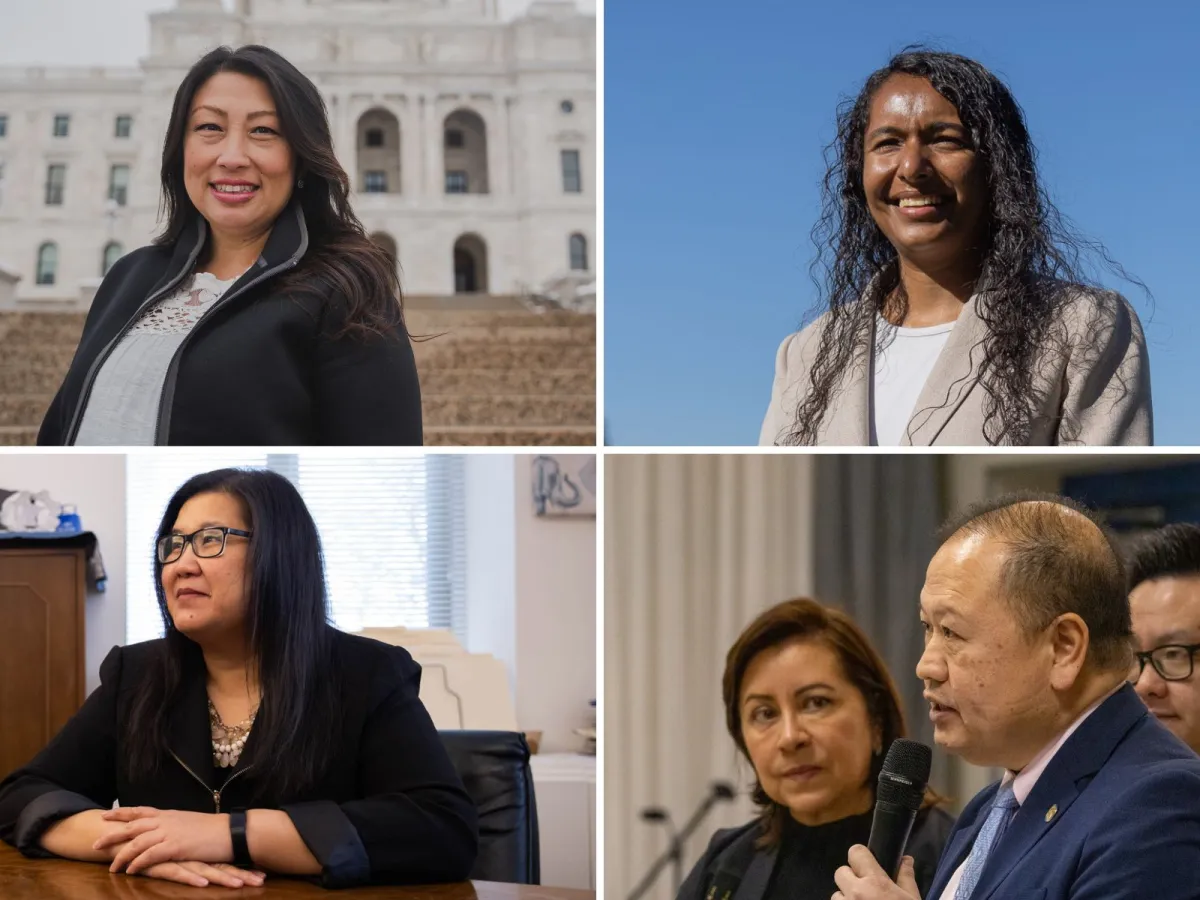Estefania Navarro was at a hardware store in 2012, when she heard an announcement interrupting the music on the shop’s radio that would change her life. Then-President Barack Obama had just created a new immigration program for undocumented youth like herself.
“I do remember feeling conflicted,” said Navarro, now 30, of the program she would later find out is called Deferred Action for Childhood Arrivals (DACA). “Why do I get this opportunity—but my mom doesn’t?”
For Navarro and her undocumented friends, anxiety about deportation was already high. If immigration officials had her information through DACA, she feared it could put her family at risk. Navarro was also having constant conversations in her community about immigration raids and neighbors being deported.
Navarro swallowed her fears. After getting pulled over for driving without a license, she applied for DACA, which allows undocumented immigrants who were brought to the United States as children to receive work authorization and a deferment from deportation for two years at a time.
While it is a temporary form of relief, that decision was a major step in turning a studious teenager uncertain about her future into a strong-willed activist.
When Donald Trump replaced Obama and began a high-profile crackdown on immigration, Navarro entered into nearly a decade of community organizing amongst Latinos and undocumented people. What started as canvassing Latino voters in Minnesota for the DFL and navigating life as a DACA recipient became a way for Navarro to make systemic change. She has led initiatives to strengthen the Minnesota Dream Act, create sanctuary cities for immigrants in Minnesota, helped push a state bill allowing undocumented people to get a driver’s license, and worked with electoral campaigns.
“I got to witness my mom step up as a leader, women coming together to address systemic issues,” Navarro said of a group of Latino parents she grew up around that helped each other out. “I just had a vehicle to channel that when I realized what was at the root of these issues and became involved in the DFL. And I’ve been a part of every election since.”
RELATED STORIES
Navarro is currently a statewide community engagement coordinator for the Bell Museum, a natural history museum and planetarium. She is also currently the outreach officer for Movimiento, the DFL’s Latino Caucus.
Emilia Gonzalez Avalos, executive director of Latino advocacy organization Unidos, met Navarro through Gonzalez Avalos’ involvement in supporting student associations at the Minneapolis Community Technical College. Navarro eventually helped create an advocacy group for Latino students in higher education with Gonzalez Avalos as one of her first full-time employees. At the time, the organization was called Navigate. Later, the group expanded its reach.
“I saw a lot of myself in Estefania. She was a high-achieving, grade-A student who was told, ‘Sorry, that’s not enough,’” Gonzalez Avalos said. The pressure was enough to break some undocumented Minnesotans, she added. “We had to have each other’s back as young people back then.”
Gonzalez Avalos worked with Navarro through the Trump administration to support undocumented people facing deportation, struggling to access resources, and more. Navarro helped lead an initiative to help young people learn how to build political power.
“The amount of emotional intelligence, relationship building, and true care for other people was entirely reflected in the way Estefania carried that program,” Gonzalez Avalos said.
While she was preparing pandemic support programming for Unidos in 2020, Navarro’s brother died. She took a step back from organizing and found she wasn’t healed enough to give her all in the same way. Now she is exploring other forms of staying involved.
A walk through south Minneapolis
Sahan Journal met with Navarro at her old school in south Minneapolis for a walk around her old neighborhood.
Navarro came to Minnesota from Mexico in 2005 with her mom and her brother when she was around 10 years old. She attended Andersen United Middle School with other Latino kids like herself.
“The school was filled with a lot of immigrant youth,” she said. “The district basically dumped us here because ESL resources were concentrated here.”
Navarro said her family bounced around until finding an unsafe, infested apartment at Cedar Avenue and 27th street. At the time, she thought those living conditions were normal.
Along with the daily struggle of living undocumented in a new city, Navarro was growing up in a broader atmosphere of anti-immigrant rhetoric and policies. In 2007, she was part of an after-school engineering, math, and science program for girls and was getting ready to go to a Lego robotics competition in Plymouth. In a team of eight, about half of the students were undocumented.
“The teachers were white, but they understood the political arena,” Navarro said. “I remember hearing conversations about them being nervous to even give us a ride.”
She felt like “illegal cargo,” Navarro said.
Navarro later graduated from Washburn High School and said she had two choices. She could either go back to Mexico and obtain an education there, or work at a temp agency and do manual labor.
“And then DACA happened, and that changed completely,” she said. “How can I take advantage of DACA—before they take it away?”
Navarro’s mother, Virginia Hernandez, said she never imagined her bookworm daughter would grow into the strong-willed activist Navarro became.
“She was quiet then,” Hernandez said. “The first couple years here were hard for her.”
Nearby, a colorful mural is painted on the side of an office building on Minnehaha Avenue. The painting looks like a large mosaic of birds and butterflies in flight, but on a closer look, human figures in the foreground appear to be in struggle. The building housed the now-defunct Resource Center of the Americas.
Navarro remembered walking by it as a kid with her family. She met a woman on her walk, Rosita Balch, who welcomed her to the center and let her use a computer and books. Balch remained a close family friend.
“At the time, she was shy but not shy,” Balch said. “She knew what she wanted and I thought this girl is going to do great things.”
‘I didn’t grow up alone’
Navarro’s mother and brother were her only relatives in Minnesota, but she found family in her community.
“I honestly feel like I was raised by a village,” Navarro said. “Through community organizing, I found this feeling of siblinghood and cousins that I didn’t have—people who have been at the margins of society, trying to find justice, but also trying to find belonging in each other.”
Leadership, she said, became less of a skillset and more of a way of life.
Navarro pushed for a resolution in 2018 to allow undocumented people to participate in the DFL convention process. Because they are not able to vote, they had always needed others to speak for them.
Navarro and other advocates at Unidos planned to introduce the resolution at the DFL convention in Rochester that year. Navarro has helped train immigrants and first-generation voters who could serve as delegates.
But when the convention began, Navarro was nowhere to be found.
“I was detained by ICE,” Navarro said.
Navarro said she went to a party in Stillwater that day. She became inebriated and accidentally entered a vehicle that wasn’t hers. Then, someone called the police. The Washington County Sheriff’s Department showed up to the scene. She was charged with trespassing and held in jail for two days.
“When they were about to release me they were asking me all these questions to book me,” Navarro said. “Once they asked, ‘Where are you from?’ I picked up that they were assessing if I was a U.S.-born citizen or not.”
The sheriff’s office alerted ICE agents while they held Navarro. In the meantime, Navarro was able to access a phone directory to search for a lawyer. After finding a name she recognized, Navarro left voicemail messages to the lawyer to update Gonzalez Avalos on Navarro’s situation.
“My heart stopped,” said Gonzalez Avalos. “She was in a detention facility and she wanted me to help her get out.”
“I thought maybe I wouldn’t see her anymore, and she’s going to get deported,” Hernandez said. “I love her and I know that my heart is where she is, but that time I felt her in my soul.”
Gonzalez Avalos helped launch a fundraising campaign to pay for Navarro’s bail, reminded her of her rights, and assured her that people in her community were trained to navigate this exact scenario. Navarro was in a waiting room about to be transferred to an ICE detention center in Sherburne when her bail was posted and she was released.
It was only then that Navarro learned the DFL state convention had passed the resolution she had worked so hard on.
After nearly four years of fighting her case, Navarro’s lawyer was able to get a judge to drop Navarro’s deportation proceedings. But she said it has felt like a looming warning that at any point, she could be put in deportation proceedings again.
Neighborhood in flames
After the death of George Floyd in May 2020, Navarro watched protesters in south Minneapolis looting and destroying property. But she saw much more than that.
“What I saw were young people who had this pent-up energy, the frustration of being quarantined for so long, rising up,” Navarro said. “Being unheard and mistreated for years, and not knowing what the government really is going to do about racial justice and healing.”
One of the last memories Navarro has with her brother was going to the uprising together. As she watched Gandhi Mahal, an Indian restaurant, burning down, Navarro saw a protester running out of the building with a large plant and towards another fire. He was about to throw the plant in the fire, until Navarro stopped him. Navarro and her brother went into the burning restaurant to save more plants.
Navarro said her brother had difficulty managing depression during the strict isolation of the COVID-19 pandemic. The killing of George Floyd also exacerbated his anxieties. He died in a car crash in July 2020 at 22 years old.
Since her brother’s death, she has taken a step back from advocacy.
“I was sad, but I told her it’s the best decision for her,” Hernandez said. She encouraged her daughter to prioritize her peace of mind.
Navarro is unsure whether she will return to advocacy work. In the meantime, she is making other plans.
“There’s a remnant of the trauma of living with DACA, that I can only think for the next two years ahead,” she said.
Trump suspended DACA in 2017, and while Biden reinstated the program, a federal judge in Texas issued a ruling in 2023 that said Biden’s move was unlawful. The case is currently being reviewed in appeals court. Additionally, with Trump running for president in November, the future of DACA—and that of the people who benefit from it—remains precarious.
Navarro, also a filmmaker, applied for a state-funded arts grant and found that she had to be a citizen or legal resident to be eligible. Now she’s exploring ways that would allow undocumented artists access to the grant. She also would like to run for office one day.
“If I am able to adjust status, I would like to run for county commissioner at some point,” Navarro said. “I want to continue to make art, define my voice, and find what that looks like for me.”






